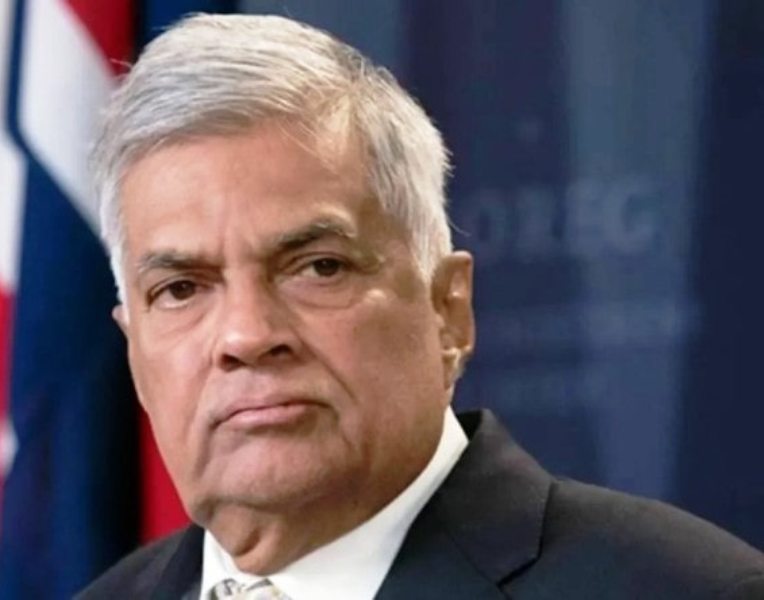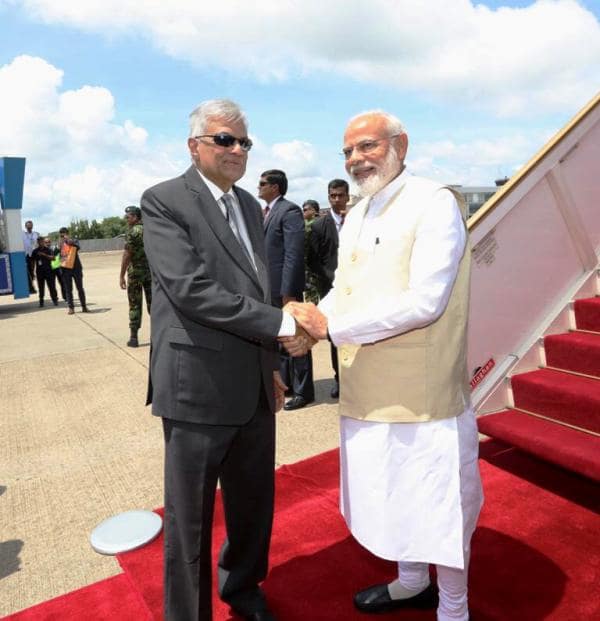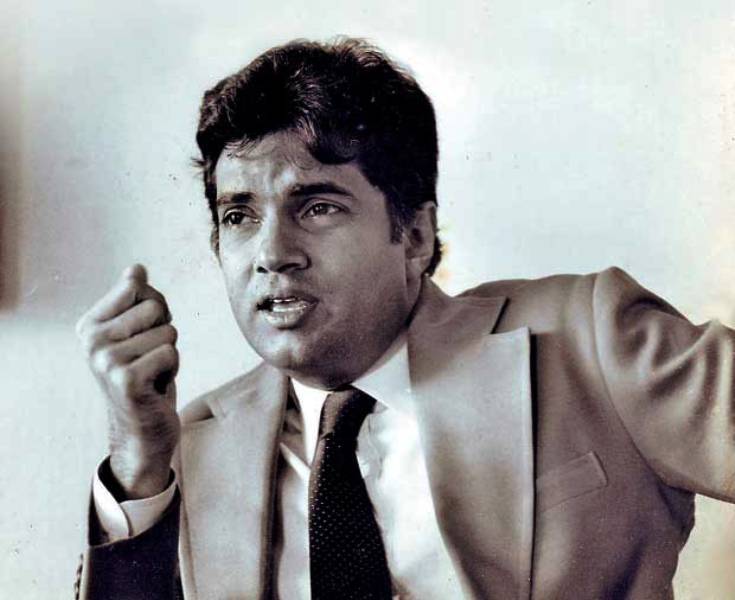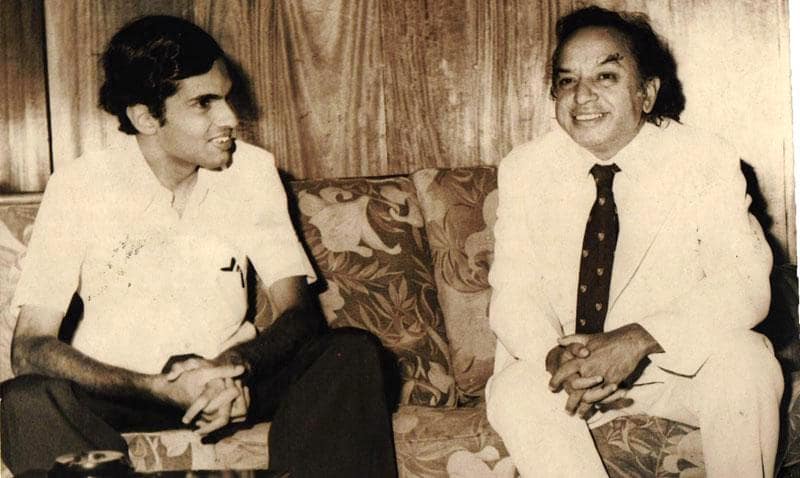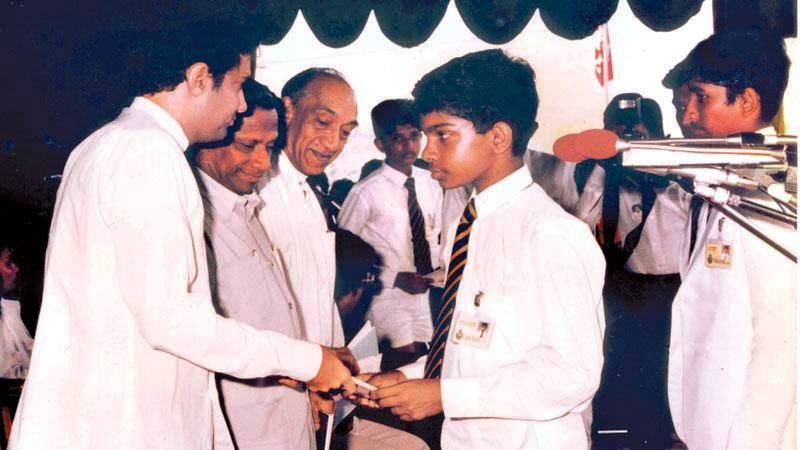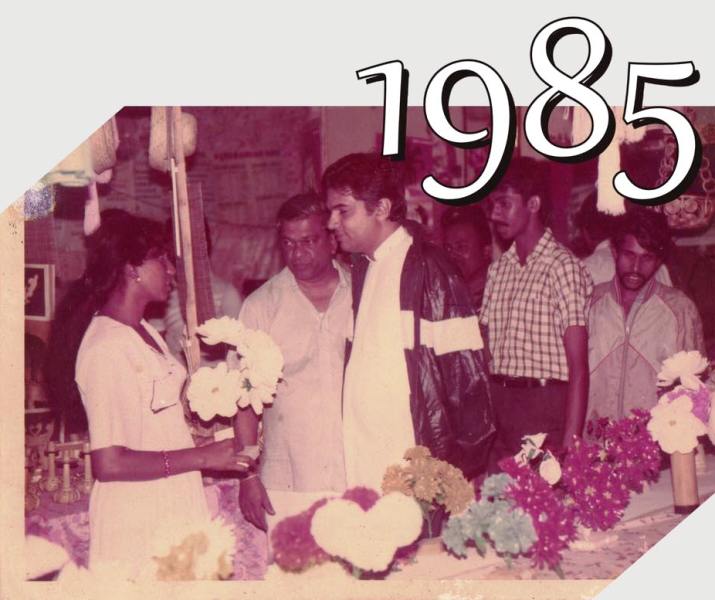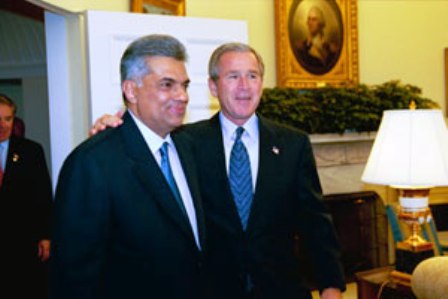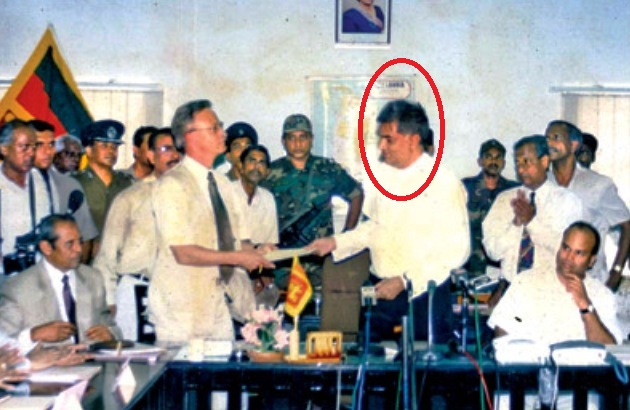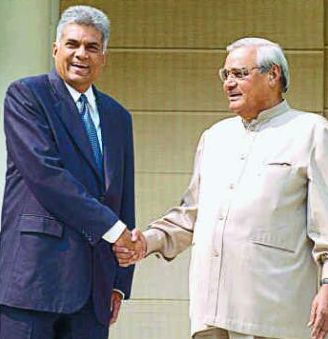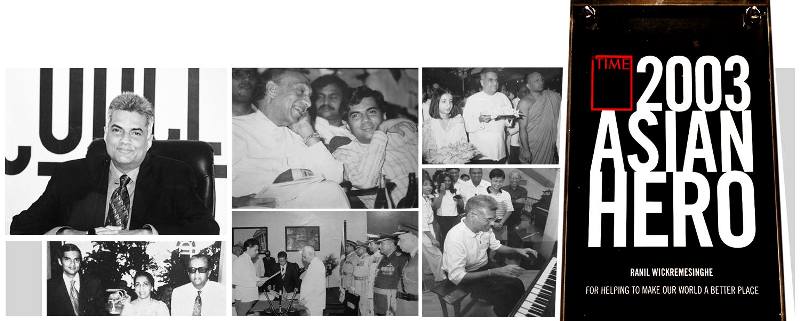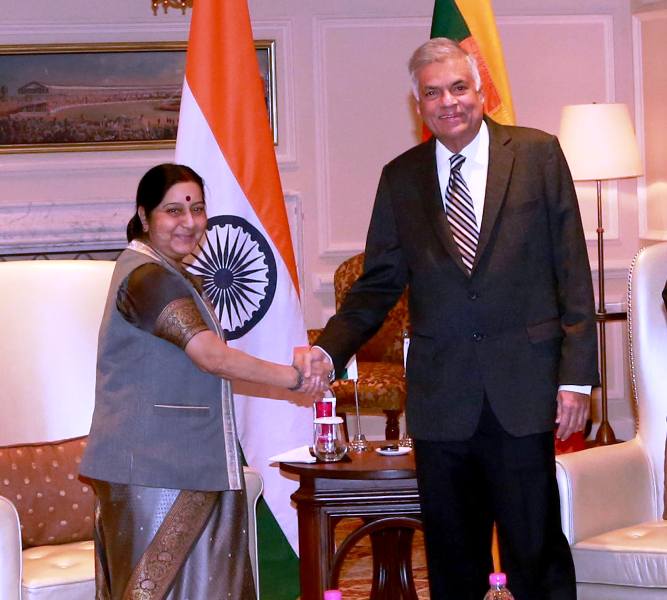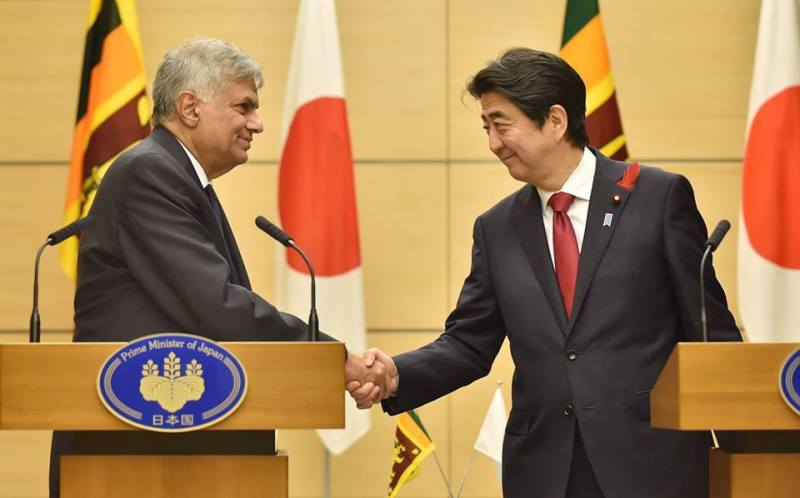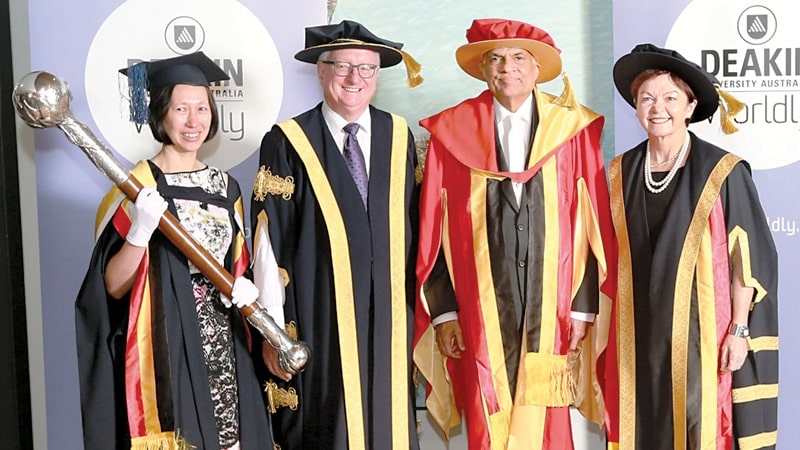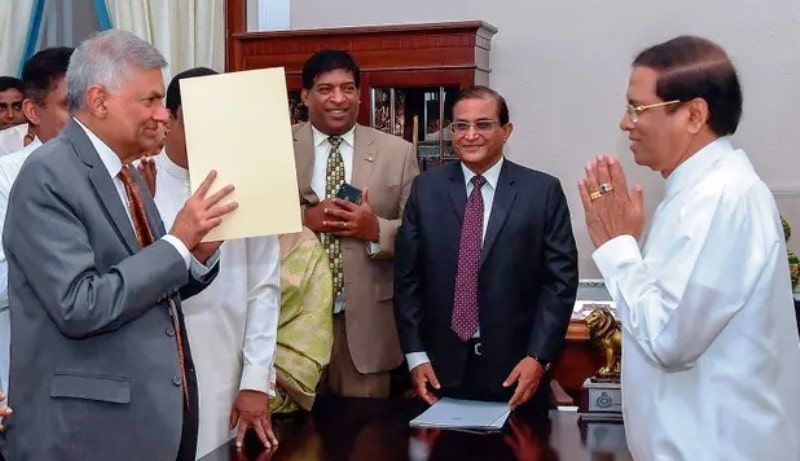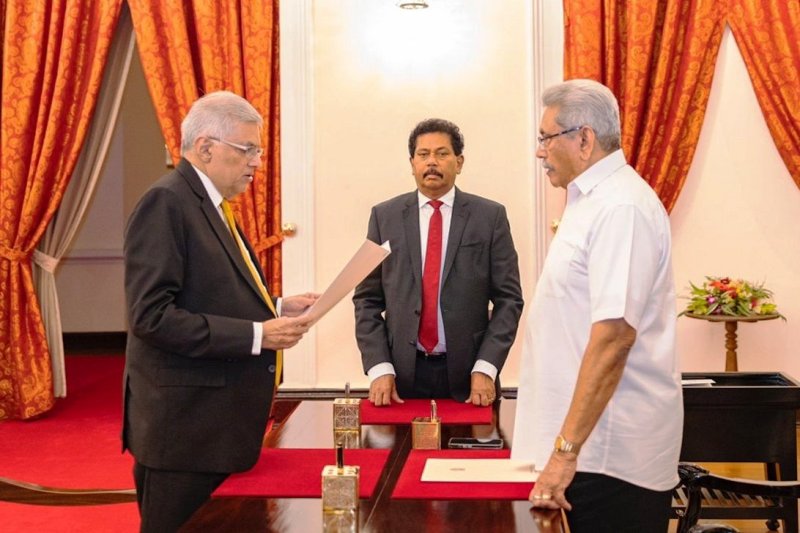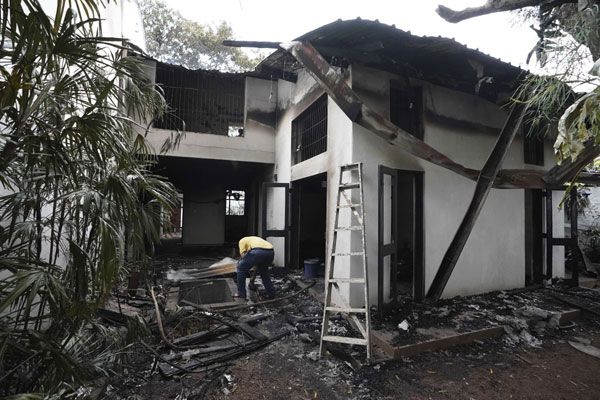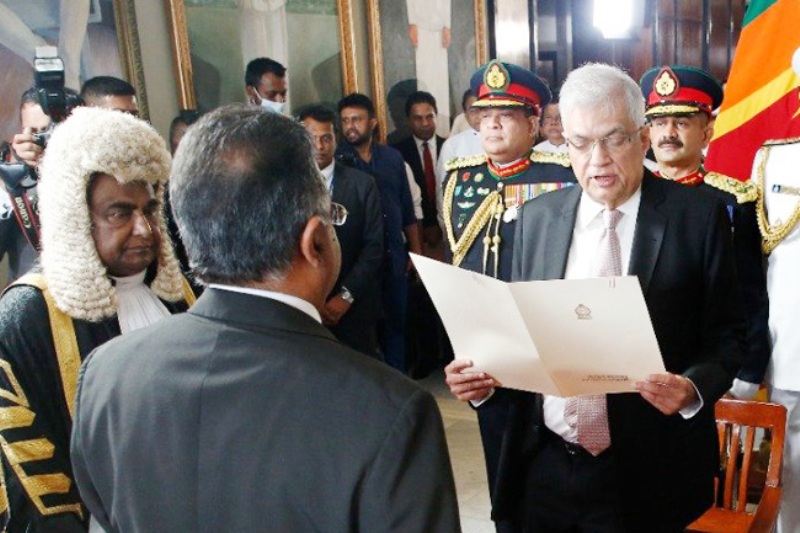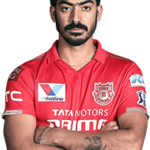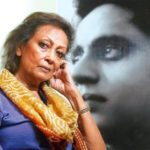Ranil Wickremesinghe Age, Wife, Family, Biography & More
| Bio/Wiki | |
|---|---|
| Profession(s) | Politician and Lawyer |
| Famous for | • Becoming the Prime Minister of Sri Lanka six times • Becoming the 9th President of Sri Lanka |
| Physical Stats & More | |
| Height (approx.) | in centimeters- 180 cm in meters- 1.80 m in feet & inches- 5’ 11” |
| Eye Colour | Dark Brown |
| Hair Colour | Salt and Pepper |
| Politics | |
| Political Party | United National Party (UNP)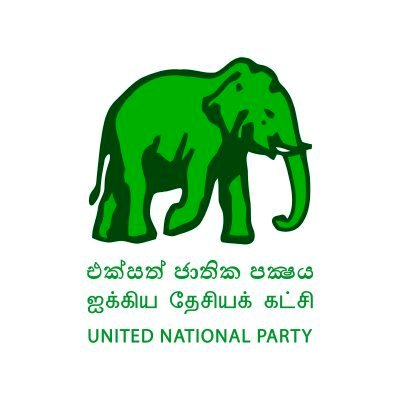 |
| Political Journey | • Deputy Minister of Foreign Affairs (1977) • Minister of Youth Affairs & Employment (1977) • Minister of Education (1980) • Minister of Industry (1989) • Leader of the House (1989) • Minister of Science and Technology (additional charge) (1990) • Prime Minister of Sri Lanka (1993-1994) • Leader of Opposition (1999-2001) • Prime Minister of Sri Lanka (2001-2004) • Leader of Opposition (2004-2015) • Prime Minister of Sri Lanka (2015-2015) • Prime Minister of Sri Lanka (2015-2018) • Prime Minister of Sri Lanka (2019-2020) • Prime Minister of Sri Lanka (2022-2022) • 9th President of Sri Lanka (July 2022-present) |
| Personal Life | |
| Date of Birth | 24 March 1949 (Thursday) |
| Age (as of 2022) | 73 Years |
| Birthplace | Colombo, Sri Lanka |
| Zodiac sign | Aries |
| Signature | 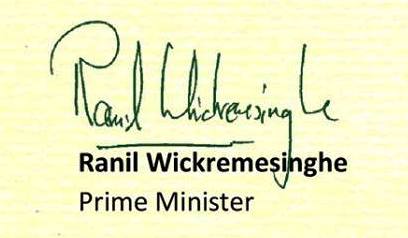 |
| Nationality | Sri Lankan |
| Hometown | Colombo, Sri Lanka |
| School | • Royal Preparatory School • Royal College, Colombo |
| College/University | • University of Ceylon (now University of Colombo) • Massachusetts Institute of Technology (MIT) |
| Educational Qualification(s) | • LLB • Robert E. Wilhelm Fellow [1]Daily Mirror |
| Religion/Religious Views | Buddhism [2]Parliament of Sri Lanka- Ranil Wickremesinghe |
| Address | House No. 117, 5th Lane, Colombo – 03, Sri Lanka |
| Hobby | Reading books |
| Controversies | • Accused of being the political power behind the Batalanda massacre: In 1987, an armed communist revolt broke out in Sri Lanka which was started by an outlaw faction named Janatha Vimukthi Peramuna (JVP). Through the movement, JVP began targeting civilians as well as military personnel. In 1987, the Sri Lankan government, which was being led by the UNP, passed a bill in the parliament which asked the Sri Lankan Armed Forces (SLAF) to suppress the armed revolt. After the ending of the counter-insurgency operations in the country, the People's Alliance (PA) accused Ranil, who back then was the minister of industry, of being the authoritative figure who sanctioned the construction of several illegal torture chambers under the garb of the Batalanda Housing Scheme (BHS). In the chambers, those who were accused of collaborating with the JVP were tortured and killed. Ranil was also accused by the PA of establishing a secret police intelligence unit which was tasked with carrying out the torture and execution of Sri Lankan citizens. [3]LankaWeb Following the accusations, in 1997, the then President of Sri Lanka Chandrika Kumaratunga constituted an investigative commission and on 12 April 1998, the commission submitted its report to the President. The commission, through its report, stated that Ranil, on several occasions, had abused his powers as a minister of industries. The report of the commission also stated that “Ranil Wickremesinghe and a police officer named SSP Nalin Delgoda were indirectly responsible for the maintenance of places of unlawful detention and torture chambers in houses at the Batalanda” and that there were more than two hundred unmarked graves at Batalanda, which contains the bodies of the victims who were tortured by the Sri Lankan law-enforcement agencies. [4]Sinhalanet.net No case was registered against Ranil as the fact-finding commission did not have judicial powers. [5]Report of the Commission of Inquiry Into the Establishment and Maintenance of Places of Unlawful Detention and Torture Chambers at the Batalanda Housing Scheme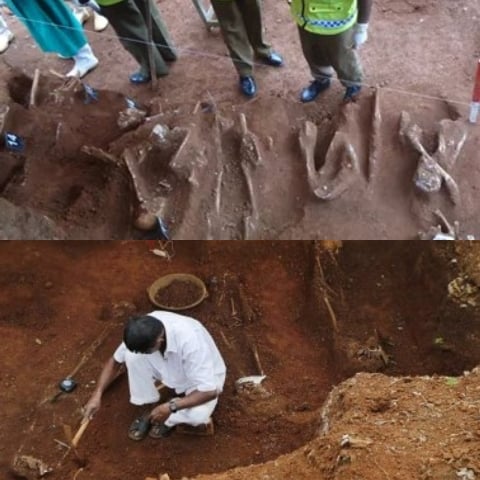 • Accused of dictatorship: Ranil, in 2010, was accused by a few senior UNP MPs of being a dictator. The MPs also accused Ranil of not listening to their demands. The former MP from UNP, Mahinda Wijesekara, accused Ranil of not accepting the recommendations that the MPs gave him to bring desired changes to the party. The former MP also claimed that he was unjustifiably thrown out of the party and that the “party does not need a dictator among its ranks.” In an interview, he said, "He can manage the crisis but he will remain in the opposition forever, unless he implements reforms. The majority in the party have agreed to decentralise power. Even after we joined, still the UNP could not grab power. Who are the leaders in this party other than us? Persons who have gone to Royal College cannot bring the party back to power. We don’t need a dictator in the party. I am one of the nine members who came to the UNP giving up Ministerial portfolios. But today I have been sidelined.” • Accused of playing a role in the Central Bank's bond scheme: In 2015, the director of the Central Bank of Sri Lanka (CBSL) sold the bank's bond to the highest bidder at a much higher interest rate than it was decided by the Sri Lankan government. This resulted in the Sri Lankan government losing approximately $ 10.6 million. In 2017, when the scam was unearthed, the then President of Sri Lanka ordered a probe and constituted a committee to investigate the issue. In the same year, Ranil, as the PM, was summoned by the committee. The People's Alliance said that Ranil was being summoned by the committee for playing an active role in the scam. However, the accusations were denied by the UNP which stated that Ranil "appeared voluntarily" in front of the commission. [6]The Hindu • Accusations levied by the daughter of a slain journalist: Lasantha Wickrematunga, founder of the Sunday Leader, was shot dead by some unknown assailants for criticizing the Rajapaksa-led Sri Lankan government. In 2019, his daughter, Ahimsa Wickrematunga, wrote a letter to Ranil in which she accused him of using her father's name to gather votes. She accused Ranil of failing to provide justice to Lasantha's family. [7]The Hindu In the letter, she wrote, "From the day my father died, you have invoked his name to win votes. My father’s murder was a prop in the 2015 parliamentary and presidential elections that made you Prime Minister. You brought President (Maithripala) Sirisena to power and won control of parliament by promising justice for my father’s murder.” • Brutal crackdown: After taking over as the President of Sri Lanka, in 2022, Ranil declared a nationwide emergency and ordered a massive crackdown on the "fascist" protests, all across the country. The law enforcement agencies, on the morning of 22 July 2022, were ordered to disperse the protesting crowd which was taking place at Galle Face Green. The crackdown was so brutal that it led to two protestors being admitted to the hospital in serious condition while more than fifty protestors were injured. Many BBC journalists were also injured as they were present in the area, covering the protests. Justifying the need for a crackdown, Ranil, in an interview said, "Peaceful protests are accepted, however, there are some who are engaged in acts of sabotage…There are fascist groups that are trying to incite violence in the country. Such groups snatched weapons and ammunition from the soldiers recently. 24 soldiers have… If you try to topple the government and occupy the president’s office and the prime minister’s office, that is not democracy; it is against the law. We will deal with them firmly according to the law. We will not allow a minority of protesters to suppress the aspirations of the silent majority clamouring for a change in the political system.” Ranil-led Sri Lankan government faced criticism from the international community who condemned the brutal crackdown on the protestors as well as the journalists. [8]The Guardian |
| Relationships & More | |
| Marital Status | Married |
| Marriage Date | Year, 1995 |
| Family | |
| Wife/Spouse | Maithree Wickremesinghe (professor, director of the Centre for Gender Studies at the University of Kelaniya)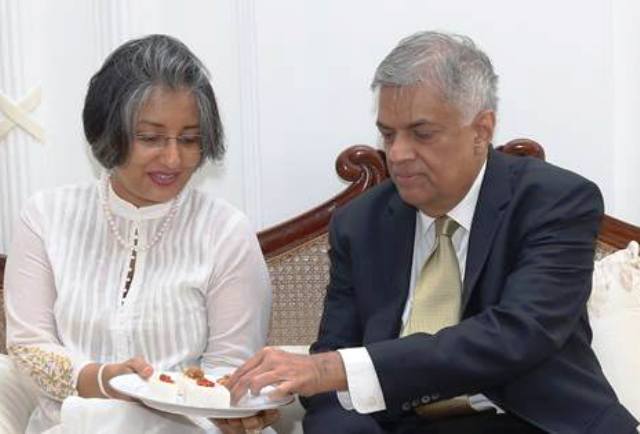 |
| Children | None |
| Parents | Father- Esmond Wickremesinghe (lawyer, journalist) Mother- Nalini Wickremesinghe 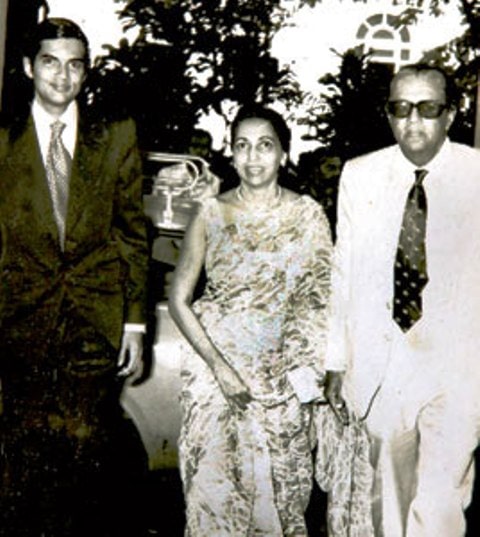 |
| Siblings | Brother(s)- 3 • Shan Wickremesinghe • Niraj Wickremesinghe • Channa Wickremesinghe Sister- • Kshanika Wickremesinghe 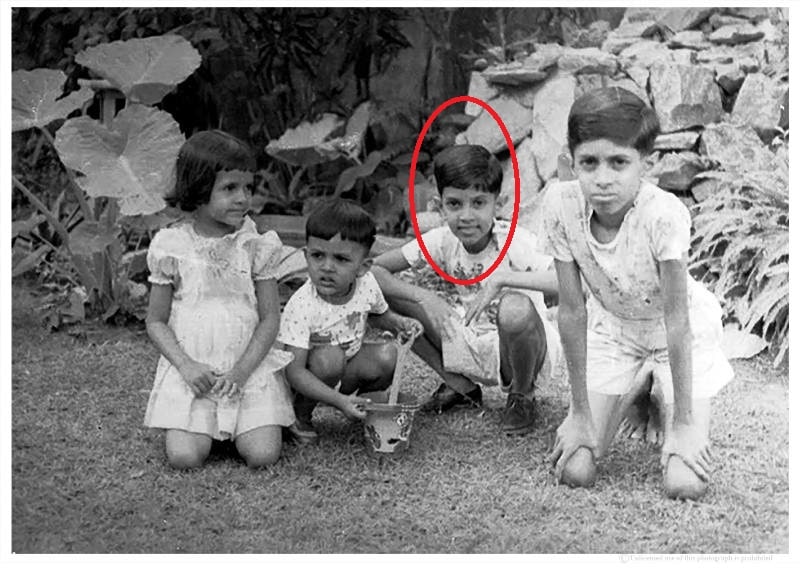 |
| Money Factor | |
| Salary (as President of Sri Lanka) | 90,000 Sri Lankan Rupees + other allowances (as of July 2022) [9]LankaNewsWeb |
| Assets/Properties | He owned a bungalow in Sri Lanka's posh locality which was vandalized by the protestors during the Sri Lankan crisis. |
Some Lesser Known Facts About Ranil Wickremesinghe
- Ranil Wickremesinghe is a Sri Lankan lawyer, United National Party’s (UNP) member of the parliament, and the 9th President of Sri Lanka. He is known to have held the position of Prime Minister six times.
- In 1972, after completing his graduation, Ranil Wickremesinghe worked as an advocate under the apprentice of a famous Sri Lankan Supreme Court lawyer named H. W. Jayewardene.
- After working as an apprentice for a few months, in 1972, Ranil Wickremesinghe started practising law in Sri Lanka’s apex court.
- Ranil Wickremesinghe’s political journey began when he joined the youth wing of the United National Party (UNP) while he was pursuing his graduation at the University of Ceylon.
- Climbing up the party’s ranks, Ranil Wickremesinghe was appointed as the chief organizer of the party during the Kelaniya by-elections held in Sri Lanka in 1975.
- In 1977, Ranil Wickremesinghe contested his first national elections from the Biyagama constituency. During the elections, he was made the UNP’s chief organizer of the Biyagama elections.
- Later in 1977, aged 28, after winning the parliamentary elections from the Biyagama electorate, Ranil Wickremesinghe entered the parliament as a member.
- After being made the Deputy Minister of Foreign Affairs, in 1977, Ranil Wickremesinghe became the youngest member of parliament to have been given a ministerial appointment. [10]Business Standard
- From 5 October 1977 to 14 February 1980, Ranil Wickremesinghe served as the Minister of Youth Affairs & Employment. After taking the charge of the ministry, he established the National Youth Services Council (NYSC), which aimed at providing vocational training and career counselling to those who could not pursue higher education due to some reason.
- In 1980, Ranil Wickremesinghe was side-stepped and given charge of the Education Ministry. As an Education Minister, Ranil introduced several policies which were aimed at uplifting the quality of education being provided in the country. Through his policies, he brought uniformity in the distribution of stationery items among the students, prohibited the political appointment of teachers in government-run educational institutions, and introduced educational televisions and computers in schools and colleges. He held the appointment as an Education Minister till 1989.
- In 1989, Ranil Wickremesinghe was appointed as the Minister of Industries. There, he passed several bills which led to the formation of the Biyagama Special Economic Zone (B-SEZ). [11]WION
- Ranil Wickremesinghe became the leader of the house by defeating his political rivals, Lalith Athulathmudali and Gamini Dissanayake, in 1989.
- In 1990, Ranil Wickremesinghe was given the additional charge of the Science and Technology Ministry.
- In 1993, Ranasinghe Premadasa, the then President of Sri Lanka was assassinated by a Tamil rebel faction named the Liberation Tigers of Tamil Elam (LTTE). After his assassination, Ranil Wickremesinghe took over the post of Prime Minister, while a senior UNP leader, D. B. Wijetunga, was appointed as the President of Sri Lanka.
- In 1994, Wickremesinghe-led UNP was defeated by their rivals, the People’s Alliance (PA), in the parliamentary elections. Later in the same year, Ranil contested for the post of the leader of the opposition, and he was defeated by a margin of two votes by another UNP leader Gamini Dissanayake. Gamini, after defeating Ranil, became the UNP’s “by-default” candidate for the Presidential elections.
- Later in 1994, Gamini Dissanayake was assassinated by the LTTE. After his assassination, his widow, Srima Dissanayake, took over as the leader of the opposition and contested the 1994 Presidential elections. In the elections, Srima was defeated by her People’s Alliance rival, Chandrika Kumaratunga, by a margin of 35% of the votes.
- After Srima’s defeat in the 1994 Presidential elections, she resigned from the position as the leader of the opposition, and the party once again chose Ranil Wickremesinghe as its leader.
- In 1999, Ranil Wickremesinghe was chosen by the party as its Presidential candidate against Chandrika Kumaratunga.
- Before the elections, in 1999, both UNP and People’s Alliance got involved in the electoral campaigning for their candidates, especially in the North-Western Province (NWP) of Sri Lanka. When one such political rally was being addressed by Chandrika Kumaratunga, the militant faction, LTTE, detonated a bomb near her which resulted in her losing her right eye. As a result of the attack, there was a wave of sympathy for Chandrika Kumaratunga among the people, who voted for her and made her victorious in the 1999 Presidential elections. In the elections, she defeated Ranil by a margin of 51% of the votes.
- In 2000, Ranil Wickremesinghe unsuccessfully led his party during the general elections and was defeated by the People’s Alliance.
- Ranil Wickremesinghe became the Prime Minister for the second time after winning the 2001 parliament elections. In the elections, UNP secured a total of 109 seats in the parliament while the People’s Alliance secured 77 seats.
- In 2001, the appointment of Ranil Wickremesinghe as the Prime Minister of Sri Lanka limited the power of President Chandrika Kumaratunga, which led to a power tussle between the Prime Minister and the President as both belonged to different political parties.
- In 2001, Ranil Wickremesinghe initiated the Western Region Megapolis project. The project was aimed at constructing a world-class metropolis in the Western province of Sri Lanka. For the project, the Government of Sri Lanka asked for assistance from a Singaporean firm named CESMA. The project aimed at improving the standard of living in Sri Lanka, making it comparable with that of Western countries. The project was halted in 2004 after the fall of the Wickremesinghe-led government.
- In 2002, to gather the support of the West in favour of the Sri Lankan government against LTTE, Ranil Wickremesinghe visited the White House and met George W. Bush, the then President of the United States of America. By doing so, Ranil became the first Prime Minister of Sri Lanka to have met the US President since 1984. While giving an interview after the meet, Ranil said,
When the President says he is behind you, that means a lot. We came here to discuss mainly about the peace process in Sri Lanka — and I got all the support I want for that. President Bush and the US government have encouraged us to go ahead with the political process to bring peace to Sri Lanka, a peace based on equality, human rights, rule of law, in other words democracy. The backing he has given me has been a tremendous help.”
- On 22 February 2002, Ranil Wickremesinghe entered into a Ceasefire Agreement (CFA) with the LTTE. In an interview, Ranil said that the only way to end the civil war was to peacefully solve the issues which led to the outbreak of the war. The CFA was signed by the Sri Lankan government and the LTTE in the presence of the then Norwegian Ambassador Jon Westborg. [12]Daily FT After the signing of the agreement, both, the government and the LTTE decided to immediately stop their aggressive military operations in the country against one another. The signing of the agreement also led to the establishment of the Sri Lanka Monitoring Mission (SLMM); an international peace monitoring mission established under the aegis of the United Nations (UN). As a result of the signing of the agreement, Sri Lanka became peaceful and the influx of tourists in the country also increased. The A9 highway, closed since the outbreak of the civil war, was also re-opened.
- Many political analysts believed that the signing of the CFA was a false front poised by both, the Sri Lankan government and the LTTE, in front of the international community and under the garb of CFA, both were strengthening their stance, politically and militarily.
- In 2003, Ranil visited the United States, where he requested military assistance in terms of military training, military technology, intelligence, special training in counter-terrorism, and direct monetary assistance for military development. At his request, the United States Pacific Command (US-PACOM) sent a team which not only analysed the Sri Lankan military but also recommended steps to improve their efficiency. The US also donated a ship to the Sri Lankan Navy named SLNS Samudura. On the other hand, the LTTE also bolstered its capabilities by smuggling arms and ammunition from abroad. In a report submitted by the SLMM to the UN, it stated that the LTTE violated the CFA norms on 3830 occasions, while the Sri Lankan government violated the laid norms on only 351 occasions. [13]LankaWeb The report also accused the LTTE of kidnapping and killing several Sri Lankan Army officers, including the then Chief of Intelligence Colonel Tuan Nizam Muthaliff. [14]Gulf News Talking about the CFA, former Minister of Foreign Affairs of Sri Lanka Lakshman Kadirgamar, told the media,
During the ceasefire period, the LTTE was infamous for using violent means including suicide bombers, smuggling in 11 shiploads of weapons, forcibly conscripting adults and children, torturing, extorting and denying democratic and fundamental rights to the trapped civilians within the illegally usurped territory.”
- In 2003, Ranil Wickremesinghe participated in the Tokyo Donors Conference, where he asked for global support to help the Sri Lankan government in the war against the rebel faction LTTE. He also asked for assistance from the global community in rebuilding the country which had faced massive destruction because of the civil war. As a result of his global appeal, many countries, especially the European Union, donated a total of $ 4.5 billion to the Sri Lankan government. [15]Ada Derana
- As Prime Minister, Ranil Wickremesinghe implemented new foreign policies which focused on improving and fostering better relations with the West. His foreign policies had a deeper impact on the European country of Norway, which helped Sri Lanka the most during the civil war. He, as a PM, also visited India and the UK, to seek their economical and political assistance for Sri Lanka.
- In 2003, an article titled Asian Hero was published in Time Magazine.
- On 7 February 2004, Ranil Wickremesinghe’s tenure as a Prime Minister came to an end when the then President of Sri Lanka dissolved the parliament citing a threat to the nation’s sovereignty when some of the UNP MPs decided to join the Interim Self Governing Authority (ISGA), established by the LTTE.
- After the parliament was dissolved by the President, general elections were held in Sri Lanka in which the UNP lost the election to the United People’s Freedom Alliance (UPFA).
- In August 2005, Ranil Wickremesinghe contested the Presidential elections and was defeated by a margin of 2% of votes by his rival, Mahinda Rajapaksa. Many sources claim that Ranil was unable to secure a victory in the elections because the LTTE had issued an ultimatum to the Tamil populace, a minority in the North-Eastern parts of Sri Lanka, against casting their vote. [16]The Guardian Expressing his resentment, Ranil, in an interview said,
It is a setback for the peace process as you have a very divided society. There is no Sri Lankan mandate but a divided one. I have demanded a recount of the vote in parts of the country where Tamil militants had prevented an estimated 500,000 voters from reaching polling stations, but the request was rejected by Sri Lanka’s elections commissioner.”
- In 2007, when the LTTE was defeated by the Sri Lankan Army, provincial elections were held throughout Sri Lanka. In the elections, the UPFA defeated the UNP by a margin of 2,527,783 votes.
- In the same year, Ranil signed a Memorandum of Understanding (MOU) in which he agreed to support the Sri Lankan Freedom Party (SLFP) in the parliament on national issues. The signing of the MOU angered 17 UNP members of parliament, who later on defected to the ruling UPFA government. The defected members were also given charge of different ministries.
- In 2008, due to the mass defection from the party, Ranil Wickremesinghe was asked to step down from the position of the party’s president. In March 2008, the party created a post of “senior party leader” for Ranil so that he could step down, but the UNP’s working committee and the party’s parliamentary group decided to let Ranil hold the appointment as the party’s president.
- In an attempt to defeat the UPFA in the 2010 Presidential elections, Wickremesinghe-led UNP allied with twelve other political parties in 2009 and selected Sarath Fonseka, former Sri Lankan Army general, as the coalition’s Presidential candidate. [17]Al Jazeera
- In 2013, the UNP and SLFP signed an agreement in which it was decided that the UNP would support SLFP’s Presidential candidate, Maithripala Sirisena, for the 2015 Presidential elections. The UNP agreed to support the SLFP’s candidate on one condition, i.e., after winning the elections, Maithripala Sirisena would appoint Ranil as the Prime Minister.
- In 2015, after Maithripala Sirisena won the Presidential elections, he appointed Ranil Wickremesinghe as the Prime Minister. [18]Indian Council of World Affairs
- After Ranil became a Prime Minister for the third time, he formulated several policies which were aimed at creating a cordial relationship with India and China. He also emphasized balancing Indo-Sri Lankan ties by addressing the problems faced by both nations. In an interview, Ranil once said that he wanted to engage with India in a “meaningful and reasonable” discussion to solve the decades-old fishing dispute in the Palk Strait. He also defended the use of lethal force by the Sri Lankan Navy on the Indian fishermen. He said,
If someone tries to break into my house, I can shoot. If he gets killed…Law allows me to do that… On the fishermen issue, As far as I’m concerned, I have very very strong lines. This is our waters…Fishermen of Jaffna should be allowed to fish. We stopped them from fishing, That’s Why the Indian fishermen came in,, They are willing to have a deal…Let’s have a reasonable deal..But not at the expense of the income of the Northern Fishermen…No…”
- In 2015, Ranil Wickremesinghe visited Japan, where he pledged Sri Lanka’s support for Japan’s bid for a seat in the United Nations Security Council (UNSC).
- In the same year, Ranil visited Singapore, where he invited the Singaporean Navy to pay a goodwill visit to Sri Lanka.
- In the 2015 general elections, Wickremesinghe-led UNP secured a total of 106 seats in the parliament and defeated the UPFA by a record margin of 5,00,556 votes. [19]Fast News
- After getting elected as the Prime Minister, in 2015, Ranil Wickremesinghe passed several bills in the parliament which led to the creation of one million jobs in the country, improved the standard of living of the people, and reduced the tax slab for the poor. [20]Daily Mirror In an interview, Ranil said,
We have given a lot of benefits and relief for the people through this budget. . . Our aim is to lend a helping hand for everyone to prosper economically irrelevant of their political affiliations and it is pointless to become multi-millionaires if that money has been earned by heavily taxing the poor and through corrupt deals. I am not a person who hugs and embraces children, but I will ensure that their futures are secure. This country has to be completely turned around from its present plight – the eduation and health sectors have to be developed and there is a need to generate over one millioin jobs for the youth.”
- In the same year, he paid a visit to Jaffna, a war-torn city in Sri Lanka, to gather first-hand information regarding the damage inflicted during the civil war and the conditions in which the people were living. To address the difficulties faced by the people living there, Ranil Wickremesinghe passed several bills in 2015 which were aimed at creating employment, improving the medical facilities in the areas, and constructing industries. In the same year, Ranil announced that the government authorities would hand over the information to the families of those who went missing during the civil war within six months. While giving an interview, Ranil said,
The government will restart the industries that were destroyed during the war to provide employment to the people in the area and all the investigations with regard to missing persons would be completed by the relevant authorities within 6 months and the details would be handed out to their respective families.”
- In 2015, Ranil Wickremesinghe restarted the Western Region Megapolis project which was stopped in 2004. After restarting the project, the government asked the Singaporean firm CESMA to make new plans which would address issues related to traffic congestion, slums, and waste management. According to the plan recreated by CESMA, the project would provide housing facilities to more than eight million people, and it is expected to be completed by 2030. In an interview, Ranil said,
Singapore’s Cesma did the planning in 2004, but it was not followed up by President Rajapaksa. Now, we have got them to revise the plan. It will be available by the end of the year. We also want them to do the master plan for Trincomalee.”
- To revitalize the Sri Lankan economy, Ranil, while serving as the Prime Minister introduced several bills in the parliament which were aimed at improving the functioning of State Owned Enterprises (SOEs); by appointing new management that would keep a tab on the malpractices adopted by the corrupt employees and politicians. He also introduced bills which laid importance on obtaining a GSP+ status from the EU, entering into a favourable trade pact with major economic powers, establishing Special Economic Zones throughout the country, and a lot more.
- The reforms introduced by the Wickremesinghe-led government failed to provide the needed boost to the economy and the Sri Lankan economy registered its lowest growth since 2001, i.e., only 3.1%.
- In 2015, Ranil Wickremesinghe established the Financial Crimes Investigation Division (FCID), which was tasked to investigate the cases of corruption that took place during the reign of the Rajapaksa-led SLFP.
- A few months after the creation of the FCID, the former Minister of Economic Development and the younger brother of Mahinda Rajapaksa, Basil Rajapaksa, was arrested on the charges of playing a part in laundering $ 5,30,000. [21]BBC In an interview, Basil claimed,
They have no evidence. They are making wild allegations. This is a witch hunt. Neither I nor any member of my family has ill-gotten money.”
- In 2015, Ranil Wickremesinghe was criticised by the SLFP for using the FCID to hunt the Rajapaksa family members to satisfy his agenda.
- In 2017, Deakin University in Australia bestowed an honourary degree on him for his contribution to the fields of economy, education, and human rights.
- In 2018, Wickremesinghe-led UNP was defeated by Mahinda Rajapakse-led Sri Lanka Podujana Peramuna (SLPP) in the local authority elections. The UNP managed to secure only 34 seats, whereas the SLPP won the remaining seats. After UNP’s defeat, many UNP MPs demanded the resignation of Ranil following which the then President of Sri Lanka Maithripala Sirisena also asked Ranil to resign from his post to which Ranil refused.
- On 26 October 2018, the President removed Ranil from office and appointed Mahinda Rajapaksa as the Prime Minister. This act of the Sri Lankan President was termed “unlawful” and “undemocratic,” and it attracted criticism from the international community. [22]Scroll.in The events that unfolded on 26 October 2018 led to a constitutional crisis in Sri Lanka as Ranil had refused to resign from his post, claiming the move of the President to be unconstitutional, and the President, on the other hand, had appointed Mahinda Rajapaksa as the Prime Minister after which Ranil appealed to the Supreme Court in November 2018, and the apex court delivered its judgement in his favour in December 2018. The Supreme Court, in its judgement, asked the President to reinstate Ranil as the PM of Sri Lanka. [23]Reuters Following the Supreme Court’s judgement, Ranil, in an interview, said,
It is a victory for Sri Lanka’s democratic institutions and the sovereignty of our citizens. I thank everyone who stood firm in defending the constitution and ensuring the triumph of democracy. I will work for a better economic situation, better standard of living for Sri Lankans after first working to normalize the country.”
- In January 2019, Ranil Wickremesinghe was once again sworn in as the Prime Minister of Sri Lanka.
- In 2020, Ranil unsuccessfully led his party, UNP, against the SLFP in the general elections and the party managed to secure only 2.5% of the total votes. The party only managed to win one national list seat in the parliament, from which Ranil entered the parliament as its member. [24]News First
- After being unable to repay the $7 billion loan, Sri Lanka was declared a sovereign default state in 2022. To deal with the crisis, out of the 225 members of parliament, 160 MPs were in the favour of appointing Ranil Wickremesinghe as the Prime Minister of the country. The MPs, in an interview, told that Ranil has dealt with the International Monetary Fund (IMF) before, and his knowledge of the Sri Lankan economy is very deep. The MPs further said,
He is being sworn in as the prime minister … because a number of members of parliament have asked him to take over and solve the country’s problems.”
- Former President Gotabaya Rajapaksa administered Ranil Wickremesinghe the oath of the Prime Minister on 12 May 2022. After the swearing-in ceremony, Ranil told the media that he had accepted the post of Prime Minister to only work on the economical and political crisis of the country and not to hold any governmental portfolio. He said,
No, no, I’m only getting involved in the sense of helping to resolve some of the economic issues from the outside, I’m not joining the government as a minister or anything. That leaves me free. I have no interest except to make sure people are fed and parliament takes control of the situation. We want to return the nation to a position where our people will once again have three meals a day. Our youth must have a future.”
- On 25 May 2022, Ranil was given the additional charge of the Ministry of Finance and the Ministry of Economic Stability and National Policies. [25]The Hindu
- In July 2022, after the mob set his residence ablaze, Ranil, in an interview, claimed that upon the formation of a new government, he would resign from his position as the Prime Minister. [26]Al Jazeera He told the media,
I respect the rights of the protesters to peacefully undertake their demonstrations, but I will not allow another government building like the Presidential Palace or the Prime Minister’s private residence to be occupied. Today in this country we have a fuel crisis, a food shortage, we have the head of the World Food Programme coming here and we have several matters to discuss with the IMF. Therefore, if the people want, I shall resign, but only when there is another government in place.”
- When the mob attacked Ranil Wickremesinghe’s house, several sources claimed that the mob destroyed four thousand books, stole hundreds of artefacts from his house, and destroyed a 125-year-old piano. [27]The Hindu
- On 15 July 2022, after Gotabaya Rajapaksa resigned from his Presidentship and fled Sri Lanka, Ranil Wickremesinghe was sworn in as an acting President of the country. Soon after being appointed as the President, Ranil appointed himself to the post of Prime Minister, Minister of Defense, Minister of Technology, and Minister of Finance.
- On 20 July 2022, five days after becoming the acting President of Sri Lanka, Ranil, after defeating his rival Dullus Alahapperuma by securing a total of 134 votes in the parliament, was sworn in as the 9th President of Sri Lanka. [28]BBC
- Soon after becoming the 9th President, Ranil abolished the use of the honourary prefix for the President, “His Excellency.” Ranil also abolished the use of the Presidential flag. [29]Deccan Herald While giving an interview, Ranil said,
I have been against the use of the term “His excellency” since day one. The post of the President is not above anything or anyone, especially the constitution of Sri Lanka. There is no need for a separate flag as well as the President must strive to serve under the national flag of the nation.”
References/Sources:

